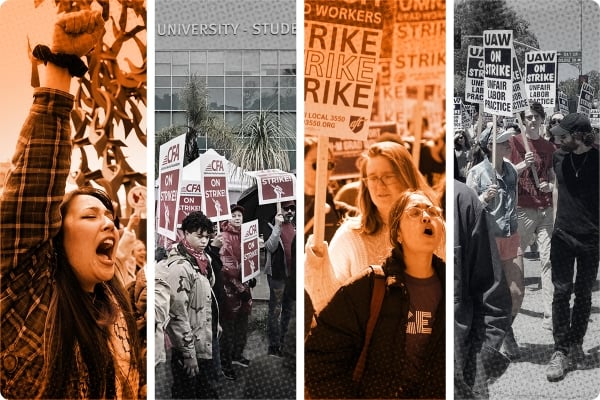In recent years, the landscape of higher education has seen a significant shift with the surge of unionization among faculty and staff members. This trend, which has been steadily growing since 2012, goes against the overall decline in union membership that has been seen in many other sectors across the United States.
According to data from the National Center for the Study of Collective Bargaining in Higher Education and the Professions, the number of unionized faculty and staff members in higher education has increased by nearly 20% since 2012. This rise in unionization can be attributed to a variety of factors, including the growing concerns over job insecurity, low wages, and lack of benefits for university employees.
One of the main driving forces behind the increase in unionization among higher education workers is the changing landscape of academic employment. As more universities rely on contingent faculty members and graduate students to teach courses, many of these workers are facing precarious working conditions with little job security or benefits. Unionization has become a way for these workers to advocate for better pay, benefits, and job stability.
Another factor contributing to the rise in unionization is the increasing awareness of social and economic inequalities within higher education institutions. As tuition costs rise and administrative salaries balloon, many faculty and staff members are pushing back against what they see as unfair treatment and lack of transparency in decision-making processes. By joining unions, workers are able to collectively bargain for better working conditions and a more equitable distribution of resources within their institutions.
Additionally, recent high-profile labor disputes and strikes at universities across the country have brought national attention to the issues facing higher education workers. From the University of California system to Harvard University, faculty and staff members have been organizing and mobilizing in support of their demands for fair wages, better benefits, and improved working conditions.
Despite these positive developments, unionization in higher education still faces challenges. Some universities have resisted unionization efforts, citing concerns over increased costs and decreased flexibility in hiring and decision-making processes. Additionally, the recent Supreme Court decision in Janus v. AFSCME has dealt a blow to public sector unions by prohibiting mandatory union fees for non-members, which could potentially impact union organizing efforts in higher education.
Nevertheless, the surge in unionization among higher education workers is a promising sign of change in an industry that has long been plagued by inequities and lack of accountability. As more faculty and staff members come together to advocate for their rights and interests, the future of labor relations in higher education looks brighter than ever.


